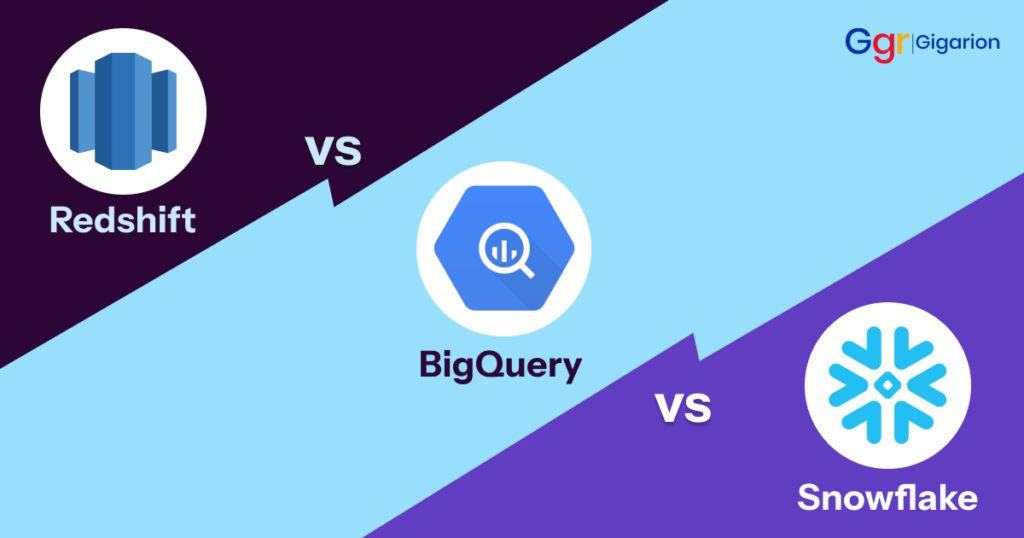Moving to the cloud has become an essential step for businesses aiming to enhance their data management capabilities, ensure seamless integration across systems, and stay ahead of the competition. This blog explores the benefits of cloud data migration and compares three leading cloud data warehouse solutions: Snowflake, Amazon Redshift, and Google BigQuery. Choosing the right platform is critical for ensuring a successful migration and long-term data management strategy.

Data is now seen as a key driver of business strategy, innovation, and growth
Benefits of Cloud Data Migration
1. Scalability and Flexibility: One of the most significant advantages of cloud data migration is the ability to scale resources up or down based on business needs. Traditional on-premises data storage solutions often struggle to handle massive data volumes and spikes in demand. With cloud-based platforms, organizations can dynamically adjust their data capacity and processing power, ensuring they only pay for what they use.
2. Improved Performance and Speed: Cloud data warehouses provide unparalleled speed for processing and analyzing data. Modern cloud platforms are designed with distributed computing architecture, allowing businesses to quickly process large datasets. Migrating to the cloud ensures faster query execution, more efficient reporting, and better real-time analytics, giving organizations the agility they need to make informed decisions.
3. Cost Efficiency: On-premises data centers come with significant infrastructure and maintenance costs. Cloud migration helps organizations reduce capital expenditure by eliminating the need for expensive hardware and minimizing operational costs. Most cloud platforms use a pay-as-you-go model, allowing businesses to better manage their budget by only paying for the resources they use.
4. Enhanced Security: Security is a top priority when it comes to handling sensitive data. Cloud platforms provide built-in security features, including encryption, multi-factor authentication, and data redundancy, to protect data from breaches or loss. Leading cloud providers adhere to strict compliance standards, ensuring businesses meet industry regulations while safeguarding their information.
5. Ease of Integration: Cloud data warehouses are designed to integrate seamlessly with various business applications, tools, and other cloud services. This interoperability ensures that organizations can create a unified data ecosystem, enhancing the overall visibility and accessibility of information.
6. Disaster Recovery and Backup: With built-in disaster recovery capabilities, cloud platforms offer greater resilience than traditional on-premises solutions. Cloud providers often guarantee automatic backups and data replication across different geographic locations, ensuring that business-critical data remains safe and accessible, even in the event of system failures.

When choosing the right platform, consider factors such as the size and nature of your workloads, your team’s technical expertise, and your existing cloud infrastructure.
Comparing Leading Cloud Data Warehouse Solutions
1. Snowflake: Simplicity Meets Scalability
Strengths:
- Snowflake is renowned for its simplicity and scalability. Its architecture is entirely decoupled, meaning storage and compute resources are scaled independently. This allows for seamless scalability without compromising performance, making Snowflake ideal for businesses that require agility in managing varying workloads. Its multi-cluster architecture also ensures automatic scaling during peak demand, enhancing operational efficiency.
- Snowflake’s platform is known for its ease of use, even for teams with limited cloud experience. It supports structured and semi-structured data, offering robust features such as data sharing and real-time analytics.
Drawbacks:
- While Snowflake offers a wide range of features, it comes at a premium, especially for large-scale operations that require high levels of usage. Moreover, some organizations may find the need for third-party tools to optimize usage and costs over time.
2. Amazon Redshift: High Performance with Seamless AWS Integration
Strengths:
- Amazon Redshift is a powerful and mature solution within the AWS ecosystem. Its integration with other AWS services, such as S3, Lambda, and EC2, provides unparalleled versatility for organizations that rely heavily on Amazon’s cloud services. Redshift’s columnar storage and massive parallel processing architecture allow businesses to query large datasets quickly and efficiently.
- Amazon Redshift also shines when it comes to cost management, as it offers various pricing models, including reserved instances, to optimize expenses.
Drawbacks:
- Redshift’s main drawback is its reliance on fixed clusters for computing, which can limit flexibility and scalability. Additionally, managing Redshift clusters requires more technical expertise compared to other solutions, which may pose challenges for businesses with limited cloud experience.
3. Google BigQuery: Serverless and Cost-Effective
Strengths:
- Google BigQuery is a fully managed, serverless data warehouse that eliminates the need for infrastructure management. Businesses can focus on analyzing data without worrying about provisioning resources. Its serverless architecture ensures seamless scalability, as BigQuery automatically allocates resources based on the size of the workload.
- BigQuery’s pay-as-you-go pricing model makes it a cost-effective option for businesses with fluctuating data demands. Furthermore, it integrates seamlessly with Google Cloud services, making it an attractive choice for organizations already within the Google ecosystem.
Drawbacks:
- While BigQuery offers immense scalability and cost efficiency, it is less suitable for workloads requiring frequent small queries, as these can lead to higher costs. Additionally, businesses that use non-Google services may find integration somewhat limited compared to other platforms.
Choosing the Right Platform for Your Business
Each cloud data warehouse solution—Snowflake, Amazon Redshift, and Google BigQuery—offers unique advantages that cater to different business needs. Snowflake excels in simplicity and flexibility, Redshift shines in its performance and seamless AWS integration, and BigQuery stands out for its serverless architecture and cost-effective pricing.
When choosing the right platform, consider factors such as the size and nature of your workloads, your team’s technical expertise, and your existing cloud infrastructure. The right choice will depend on aligning your business’s long-term goals with the capabilities of each platform.
Ultimately, migrating to the cloud can unlock powerful advantages for your data management strategy, ensuring greater agility, security, and performance. Choosing the right cloud data warehouse is crucial for positioning your business for success in an increasingly data-driven world. In case you need help, our experts are ready here, we’ve long history supporting customers worldwide to do the digital transformation a couple years back, contact us now for details.